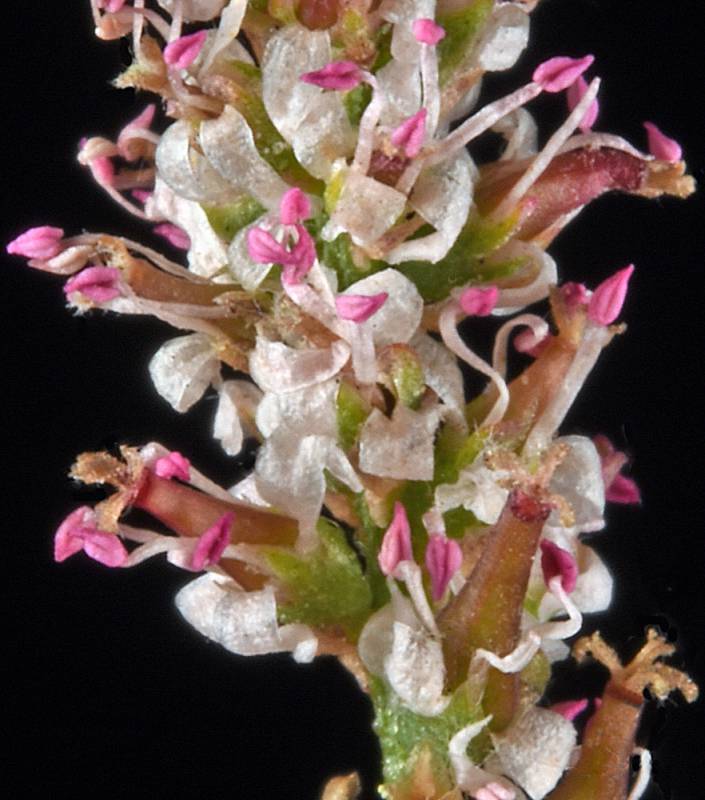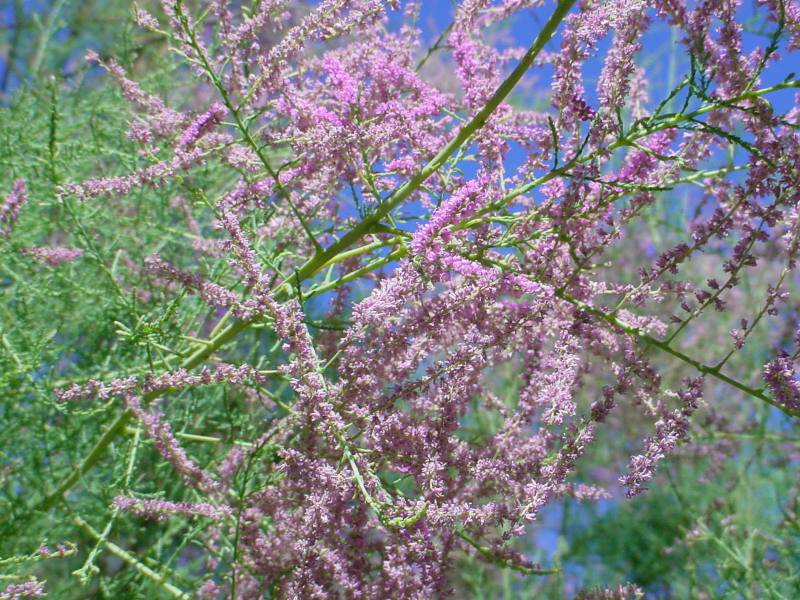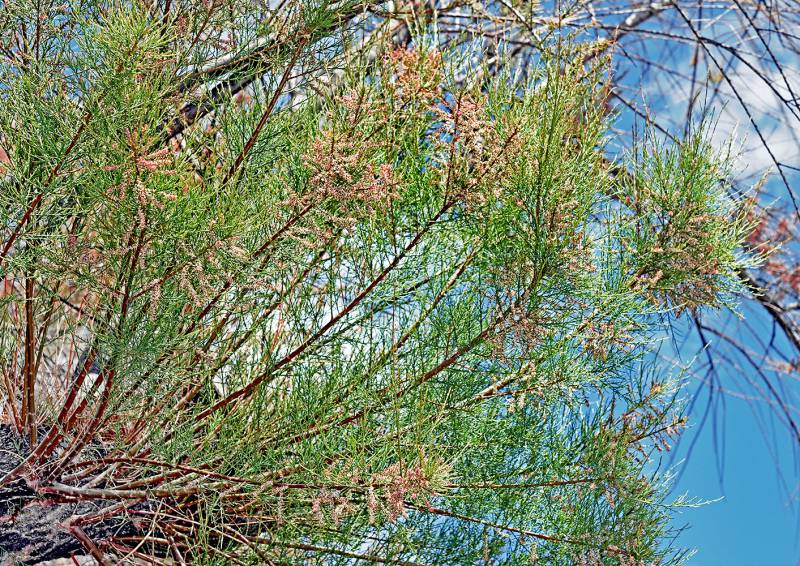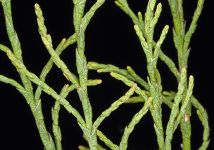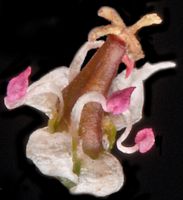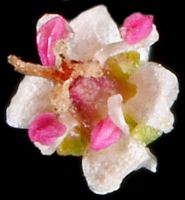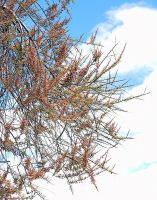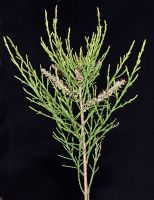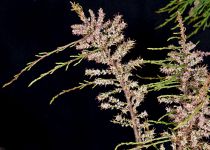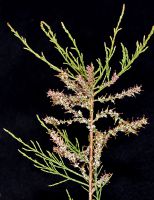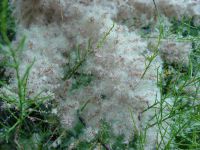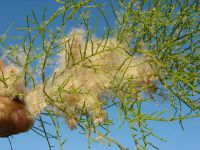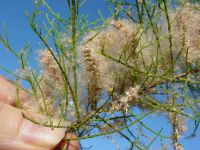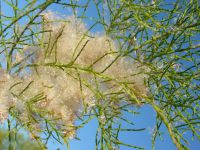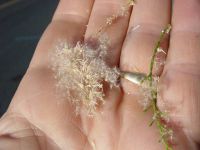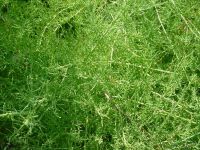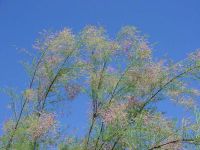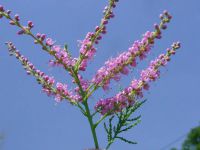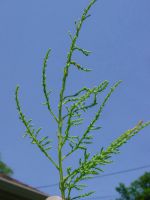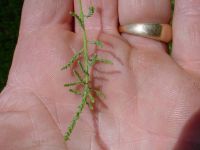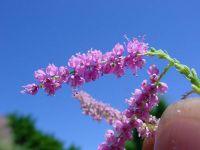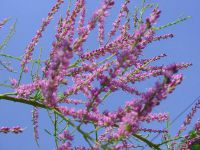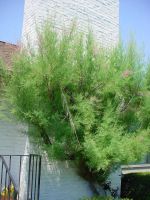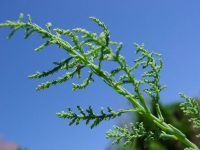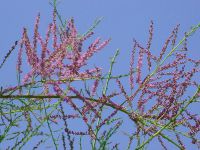Distribution: Occurring chiefly east of the Cascades crest in Washington; south-central British Columbia to California, east to the southern Rocky Mountains and southern Great Plains.
Habitat: Mostly in riparian areas in arid regions.
Flowers: May-June
Origin: Introduced from southern Europe and northern Africa
Growth Duration: Perennial
Conservation Status: Not of concern
Spreading shrub 2-4 m. tall, with several arching to recurved branches.
Leaves 4-ranked, lanceolate, sessile, scale-like, 1-1.5 mm. long.
Inflorescence of long, slender, spike-like racemes produced on wood of the previous season; sepals 4, distinct; petals 4, pale pink, distinct, 1-1.5 mm. long; stamens 4, attached to a disk with the petals; styles 4; ovary superior.
Capsule.
Publication: Prodr. 3: 97. 1828.
PNW Herbaria: Specimen records of Tamarix parviflora in the Consortium of Pacific Northwest Herbaria database
WA Flora Checklist: Tamarix parviflora checklist entry
OregonFlora: Tamarix parviflora information
E-Flora BC: Tamarix parviflora atlas page
CalPhotos: Tamarix parviflora photos

